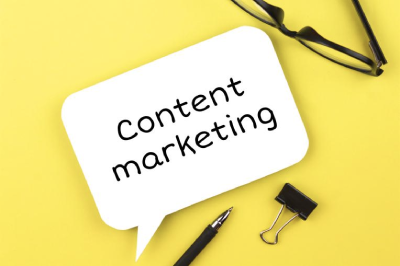In 2025, B2B content marketing is no longer about publishing more — it’s about publishing smarter.
Marketing teams are under pressure to create personalized, performance-driven content at scale. But with lean resources and fast-moving buyer journeys, relying solely on manual processes is no longer sustainable.
That’s where content marketing automation comes in — not as a buzzword, but as a real operational shift.
Yet, here’s the common mistake: many brands confuse marketing automation tools (like email delivery or CRM workflows) with content automation tools (that actually assist with ideation, creation, and optimization).
Let’s be clear:
Not all marketing automation tools are content automation tools.
While platforms like HubSpot, Mailchimp, or ActiveCampaign help you deliver content, true automated content marketing systems help you plan, generate, personalize, and scale content across channels — often with the help of AI and automation logic.
This guide will help you understand how to build and scale a B2B content engine using the right tools, systems, and strategy — and how Reliqus can help make that transformation efficient and measurable.
What Is Content Marketing Automation?
Content marketing automation refers to the strategic use of automation tools to streamline the end-to-end lifecycle of your content — from planning and production to publishing, distribution, and performance analysis.
This includes:
- Automating topic research
- Generating content using AI
- Personalizing email and web content
- Optimizing SEO workflows
- Scheduling across channels
- Scoring leads based on content interaction
- Reporting on performance — automatically
When implemented properly, marketing automation content marketing systems reduce manual touchpoints and bring consistency, scalability, and clarity into your funnel.
Why B2B Brands Are Embracing Automated Content Marketing
In the B2B world, content doesn’t just build awareness — it nurtures trust and guides buyers through long, complex decision cycles. But delivering that kind of content at the right time, in the right format, to the right person is nearly impossible manually.
Here’s what automated content marketing unlocks:
1. Personalized Lead Journeys at Scale
Use behavioral triggers and segmentation rules to deliver ebooks, case studies, or blog recommendations tailored to each persona — automatically.
2. Consistent SEO Execution
Using SEO content automation, marketers can optimize metadata, internal links, readability, and keyword usage without spending hours in spreadsheets.
3. Multi-Channel Content Delivery
Repurpose a single blog into email sequences, social posts, and gated assets — all scheduled and distributed via your automation stack.
4. Data-Driven Content Strategy
Track which content drives conversions, not just clicks. Assign content scores and attribution values to improve editorial planning.
5. Leaner Teams, Greater Output
Automation lets your small team act like an enterprise team — publishing frequently without burning out.
What Marketing Automation for B2B Content Looks Like in Practice
Let’s break this down into a real-world example:
Scenario: A B2B SaaS company wants to attract enterprise leads and nurture them through a high-ticket funnel.
Here’s how a marketing automation system handles it:
- Top of Funnel
- ChatGPT + Semrush generate SEO blog ideas
- Jasper or ContentShake AI writes the first draft
- Surfer SEO optimizes it before publishing
- WordPress auto-schedules posts weekly
- Middle of Funnel
- Brevo or HubSpot triggers emails based on blog engagement
- Dynamic CTAs recommend webinars or whitepapers
- Lead scoring increases based on the content depth consumed
- Bottom of Funnel
- High-scoring leads are added to a CRM sequence (e.g., HubSpot or Pardot)
- The sales team is notified automatically
- Internal report highlights best-performing content
Every step in this journey is supported by content marketing automation — and all of it can be built and managed by Reliqus.
Top Tools to Support B2B Content Marketing Automation
Here’s a curated stack of tools across each stage of your content lifecycle:
| Stage | Tools | Purpose |
| Ideation | ChatGPT, Semrush, BuzzSumo | Topic research, pain point mapping |
| Creation | Jasper, Grammarly, ContentShake AI | Content writing and editing |
| Optimization | Surfer SEO, Clearscope, RankMath | SEO content automation |
| Publishing | WordPress, Webflow, Buffer | Scheduling and CMS management |
| Email Automation | Brevo, Mailchimp, Omnisend | Nurture flows and delivery |
| CRM & Lead Scoring | HubSpot, ActiveCampaign, Marketo, Pardot | Engagement tracking and personalization |
| Reporting | GA4, Matomo, HubSpot reports | Performance dashboards |
Reliqus can help you select, integrate, and configure this stack based on your size, goals, and resources.
How Reliqus Helps You Harness Marketing Automation for B2B Content
Most companies either buy too many tools or never fully implement the ones they have.
Reliqus takes a consultative approach — aligning your business goals with the right content automation roadmap.
Here’s how we help:
- Audit your current content strategy and identify automation opportunities
- Design workflows that connect your editorial calendar with marketing goals
- Implement tools like Jasper, Surfer, HubSpot, or Brevo in a unified system
- Customize logic for content scoring, segmentation, and personalization
- Train your team to use these tools efficiently
- Measure success through performance and revenue attribution
Whether you’re starting from scratch or scaling a mature content engine, Reliqus builds automation systems that work — not just another set of dashboards you ignore.
You can also book your free consultation to discuss your specific needs.
Final Thoughts
Content automation isn’t about publishing more — it’s about doing more with the content you already have.
In the B2B space, where leads are nurtured through expertise, education, and timing, automated content marketing gives you a way to scale your strategy without sacrificing depth.
The best part? You don’t need to reinvent your team or tech stack. You just need a smart system and the right partner to implement it.
Reliqus can help you build that system — from content ideation to lead conversion.
If you’d like to talk to us about your content automation needs, feel free to contact us

